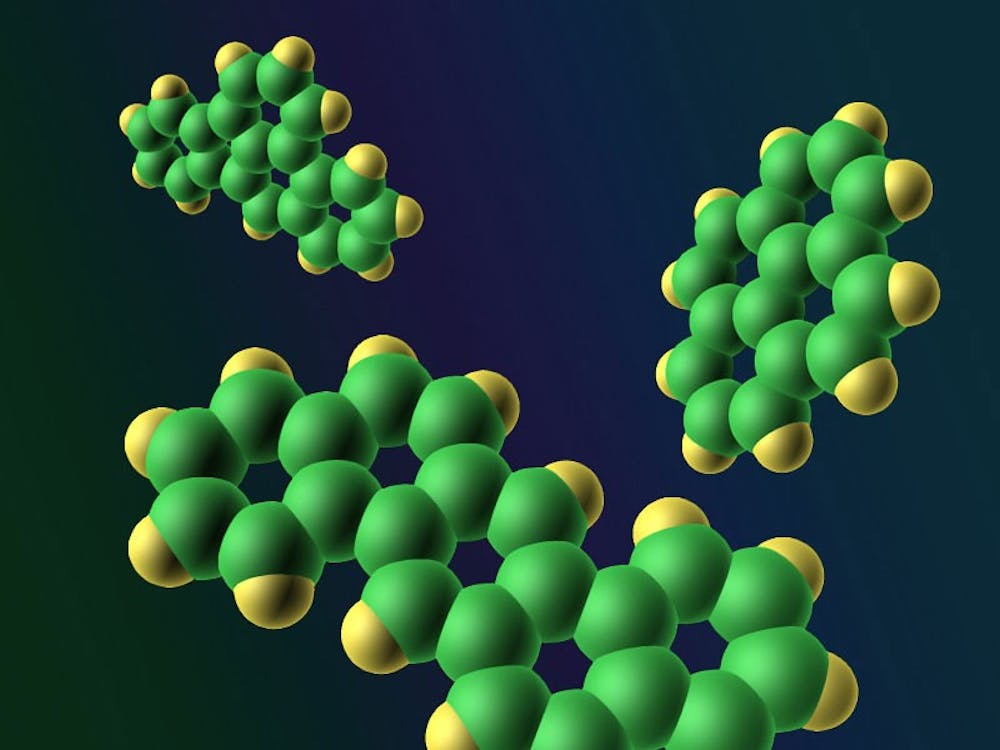Polycyclic aromatic hydrocarbons (PAHs) are naturally occurring chemicals released by the combustion of organic matter, including wood, coal, oil and gasoline. As a result of increased biofuel consumption in recent years, PAHs have become major pollutants in the atmosphere and 15 PAHs have been identified as carcinogens.
One of the most highly carcinogenic PAHs, benzo[a]pyrene (BaP), has been identified as a key pollutant in many countries and is used to estimate cancer risk resulting from exposure to PAHs in general. The incomplete understanding of the atmospheric degradation process of PAHs, however, has led to puzzlement over the persistence and long-range movement of the molecules. Previous simulations of the degradation process had failed to account for the significantly higher than expected PAH levels measured in the environment.
To resolve this discrepancy, a team of scientists from the Oregon State University, the Department of Energy’s Pacific Northwest National Laboratory and Peking University recently demonstrated a new model of the PAH degradation process. Instead of considering a model of unshielded gaseous BaP, the investigators based their simulation upon BaP bound to atmospheric particles. The low volatility of BaP makes it likely to become particle-bound and trapped in organic aerosol coatings, according to the research team’s proposal.
As detailed in the paper published online this month in the Proceedings of the National Academy of Sciences, the oxidation of PAHs by ozone is limited to the surface of the aerosol coatings, and the more viscous the aerosol, the more shielded the PAHs from oxidation and decomposition. The lifetime of BaP, according to the shielded formulation, is around five days compared to the much shorter lifetime of two hours predicted by the unshielded BaP simulation.
This elongated lifetime of shielded BaP could contribute to the pollutant’s ability to cover long distances from major source regions of emissions, such as Africa, East Asia and Western Europe, which altogether contribute to 63 percent of global BaP levels. In contrast based on the unshielded BaP model, most BaP is localized over the source regions.
The investigators found that the unshielded BaP simulation significantly underestimated the amount and distribution of BaP in comparison with the new estimates from the shielded model. It more closely approximated the BaP measurements taken from more than 300 urban and rural sites worldwide. The novel simulation also led the research team to compute a much higher global incremental lifetime cancer risk due to PAHs.
The currently acceptable limit of increased cancer risk, as established by the World Health Organization (WHO), is one death per 100,000 individuals. The new shielded formulation, however, predicted a global cancer risk of two deaths per 100,000 individuals, nearly the quadruple of the estimate of lung cancer risk (0.6 deaths per 100,000 individuals) ascertained from the unshielded BaP simulation.
In spite of the increased global risk, not all regions showed signs of an elevated cancer risk above the WHO’s limit. The highest liability to PAH-induced cancer was discovered to be in East Asia, which, according to the shielded BaP model, is four times the acceptable limit. On the other hand the United States not only contributes to only two percent of global BaP emissions, but it also exhibits an insignificant increased cancer risk well below the WHO’s limit.
The researchers were concerned, however, about the possible toxicity and lingering carcinogenic effects of oxidation products of BaP and other PAHs. Even after oxidation some PAHs have been shown to remain particle-bound and retain harmful properties. While PAHs undergo a faster degradation process in the tropics where the aerosol coating becomes more liquid-like in warm and humid conditions, the possibility of adverse health effects remains.
In a press release Manish Shrivastava, lead author and climate scientist at Pacific Northwest National Laboratory, said “We need to better understand how the shielding of PAHs varies with the complexity of aerosol composition, atmospheric chemical aging of aerosols, temperature and relative humidity.”
Additional studies concerning the atmospheric lifetime of PAHs would be required to better quantify the increased cancer risks due to exposure to these pollutants, oxidized or not.





